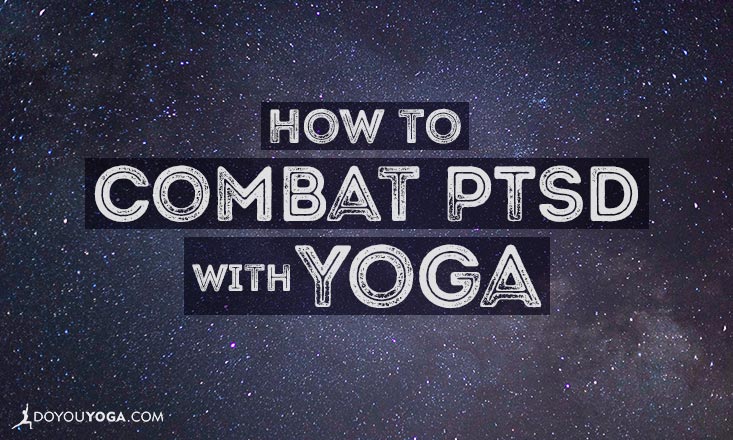Helping a loved one or a student through Chronic Post Traumatic Stress Disorder (or PTSD) can be a very difficult task.
Yoga can be a gentle way to help a person suffering from PTSD decrease the symptoms and compliment the healing process in conjunction with appropriately prescribed therapy and/or medication.
What Is PTSD?
PTSD affects men and women who have experienced mental, emotional, and sexually traumatic events.
Often the trauma existed for a prolonged period of time, as in the case of war or growing up in an abusive household. The person suffering has learned to adapt to the environment by disassociating from these events as they occurred as a way to protect themselves.
Anytime we confront a stressful situation, the mind and body need time and a safe place to retreat in order to process these events and heal. However, in most instances of PTSD, neither the time nor the space existed, and a constant exposure to life threatening circumstances continued.
In short, the trauma appeared to never end and in order to cope, the person has learned to accept that no other alternative exists.
How to Combat PTSD with Yoga
If taught and practiced with care, yoga will help those diagnosed with PTSD sleep better, uplift one's mood in the face of depression, decrease the frequency of negative or dangerous responses to triggers, flashbacks/nightmares, and panic attacks.
In the ideal situation, the student can begin feel safe and (re)learn how to create trusting relationships and environments. The main challenge is understanding what those triggers are and either avoiding them completely, or under the strict guidance of a behavioral therapist, reintroduce them slowly with the intent to try to redefine or reframe the meaning of specific situations.
If you are teaching a group class with students having a wide range of PTSD experiences, the safest approach would be to create as neutral of an environment as possible. But that is not an easy task. We all have meanings for symbols, numbers, colors, and even scents. Taking the time to learn the specifics of your student's story can help you tremendously when creating a space most conducive to healing.
Rebuilding Relationships with Fear, Anger, and Aggression
Yoga can also help to decrease the instinct to live in a hyper-aware state or to always feel the need to plan an escape route. Minimizing stimulation (visual and audio especially) encourages students to understand their internal limits without external distraction.
It is imperative that students know it's perfectly fine to not attempt a pose at all if it creates feelings of unease or discomfort, and as a teacher, please refrain from physical adjustment. Even the loving touch from an empathic instructor can feel threatening. Over time you may develop a rapport when physical adjustments are welcome, and even healing, but keep in mind that what may work great one moment may cause a memory or trigger the next.
The instructor must stay present to the ever-changing needs of the student and not become defensive. Part of the healing process involves cycling through difficult emotions and reactions until the perceived threat loses its intensity and the onset of fear and/or anger will not instigate an aggressive reaction.
Learning to discern between healthy fears and irrational fears can deeply challenge someone with PTSD.
Often, PTSD has been deemed incurable, and simply hearing that fatal diagnosis can greatly hinder a student's progress. Stay positive, and remember just as in yoga, there is no timeline for the practice we must just keep on showing up to reap the benefits.
Mindfulness in Body, Mind, and Heart
There is no set sequence of poses that work for PTSD across the board. A vigorous practice can help with depression, a slower practice can calm and soothe anxiety symptoms, and at times a silent meditation might be more effective than using flowery spiritual language and vice versa.
Find what works for your student and then be willing to modify if you sense it has lost its effectiveness or has somehow become counterproductive. Staying connected to your student's therapist is also a good idea to help monitor behavior changes. While the therapist cannot share details of the specifics of your student's case, they can offer helpful suggestions to ensure your teaching and your student's well-being are in harmony.
The greatest gift yoga can offer someone battling with PTSD is to reconnect with existing calmly and peacefully in the present moment without constantly fearing for one's own safety.
We all deserve to know a liberated life free of terror.


